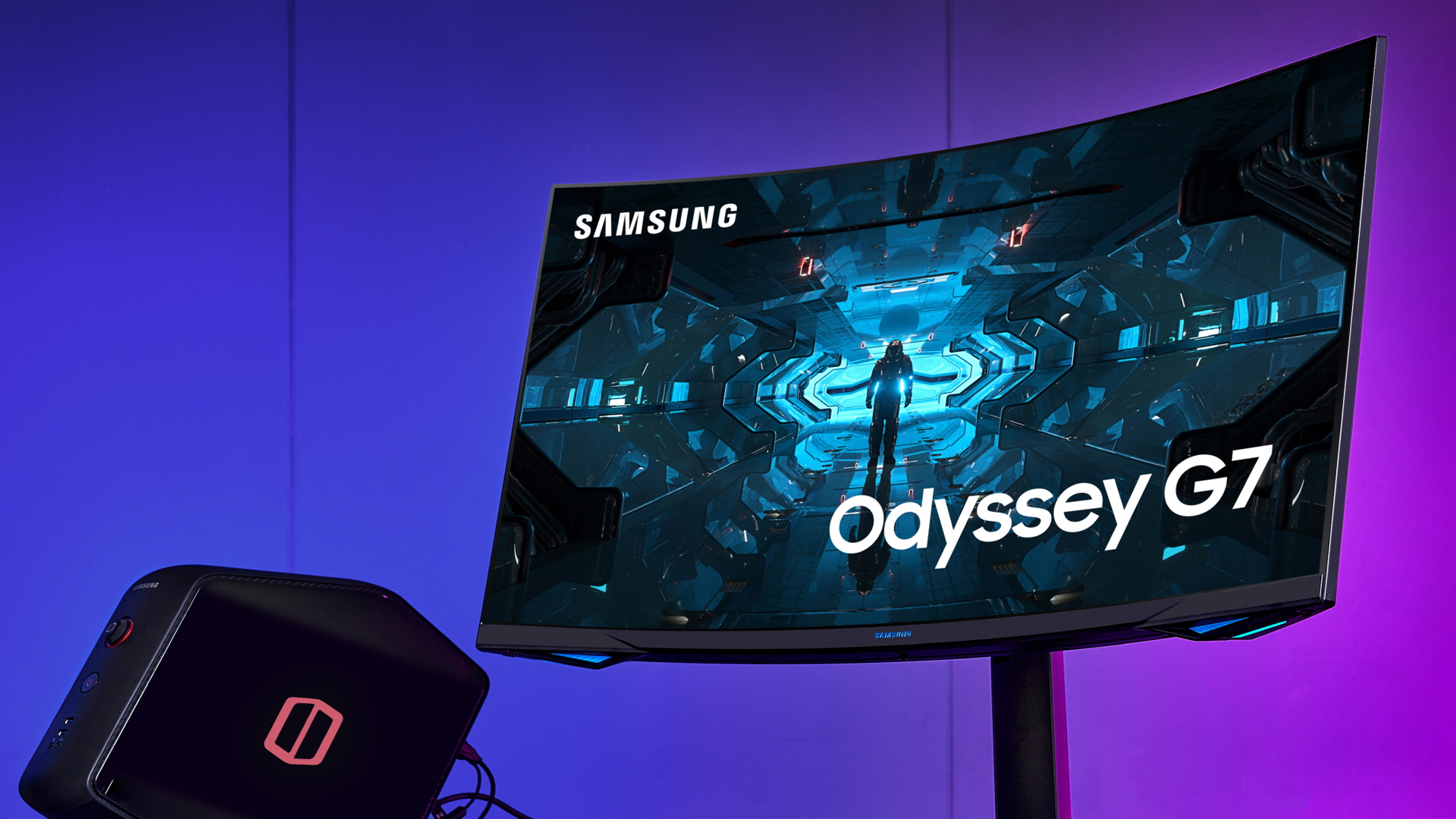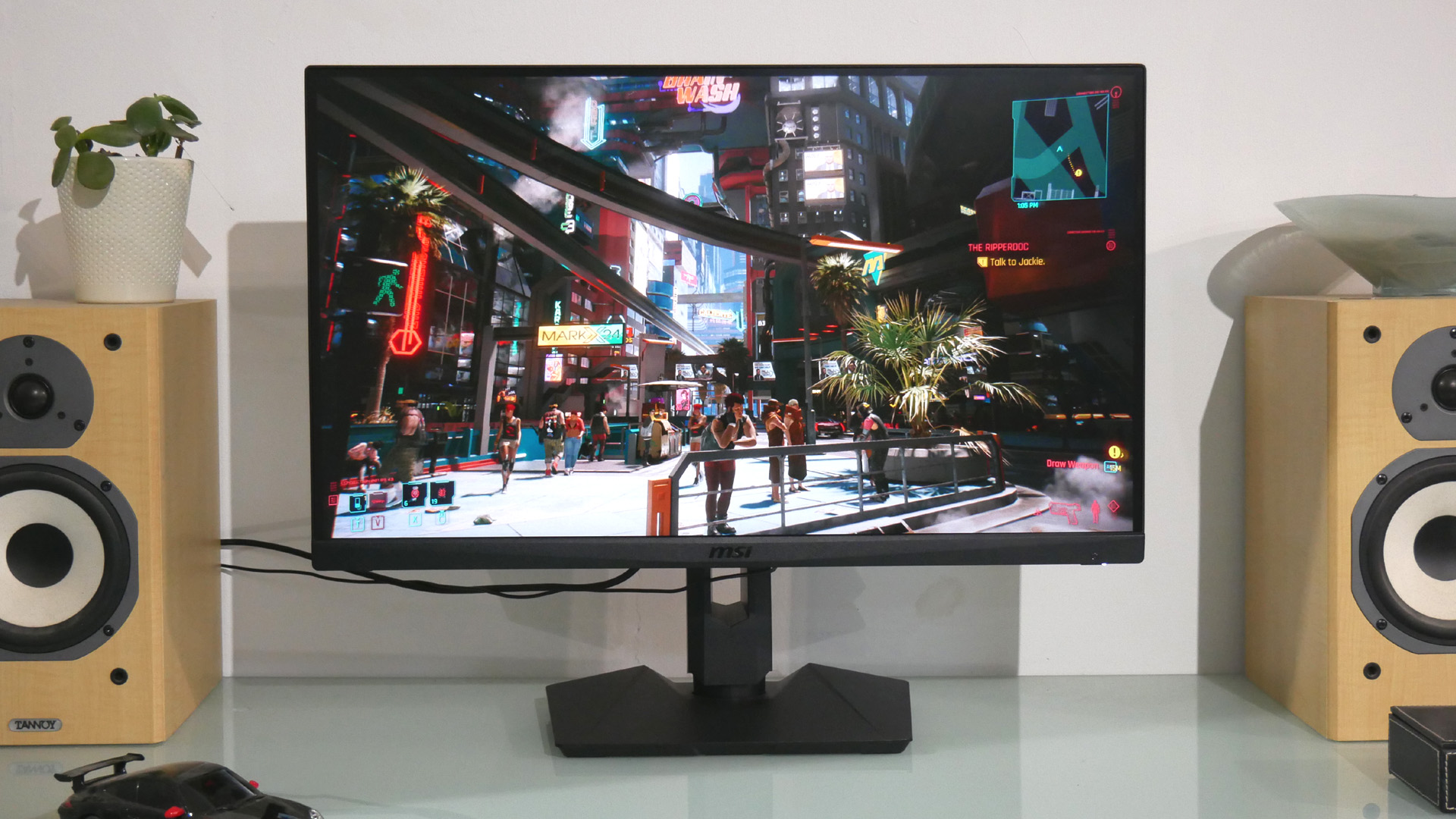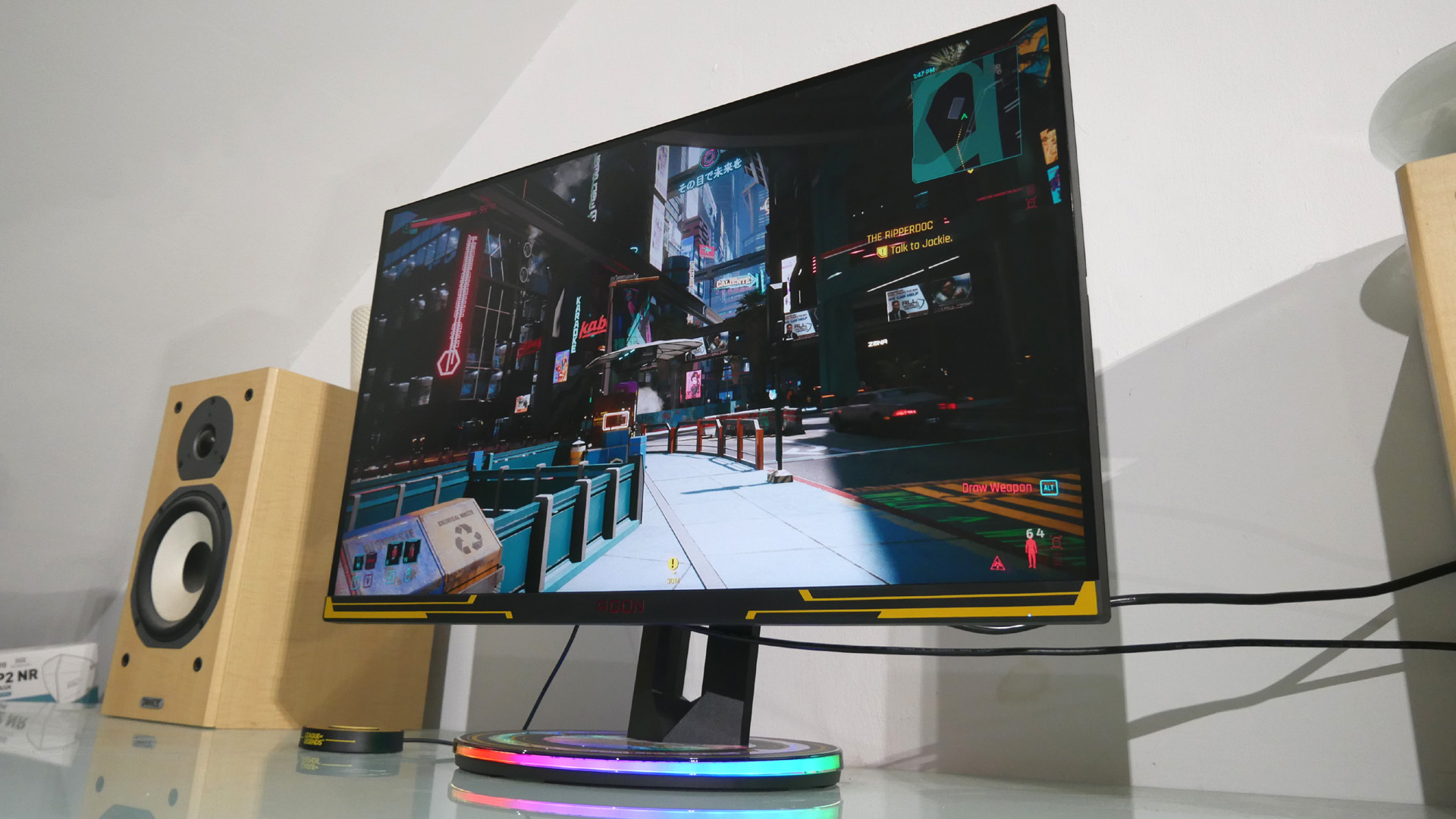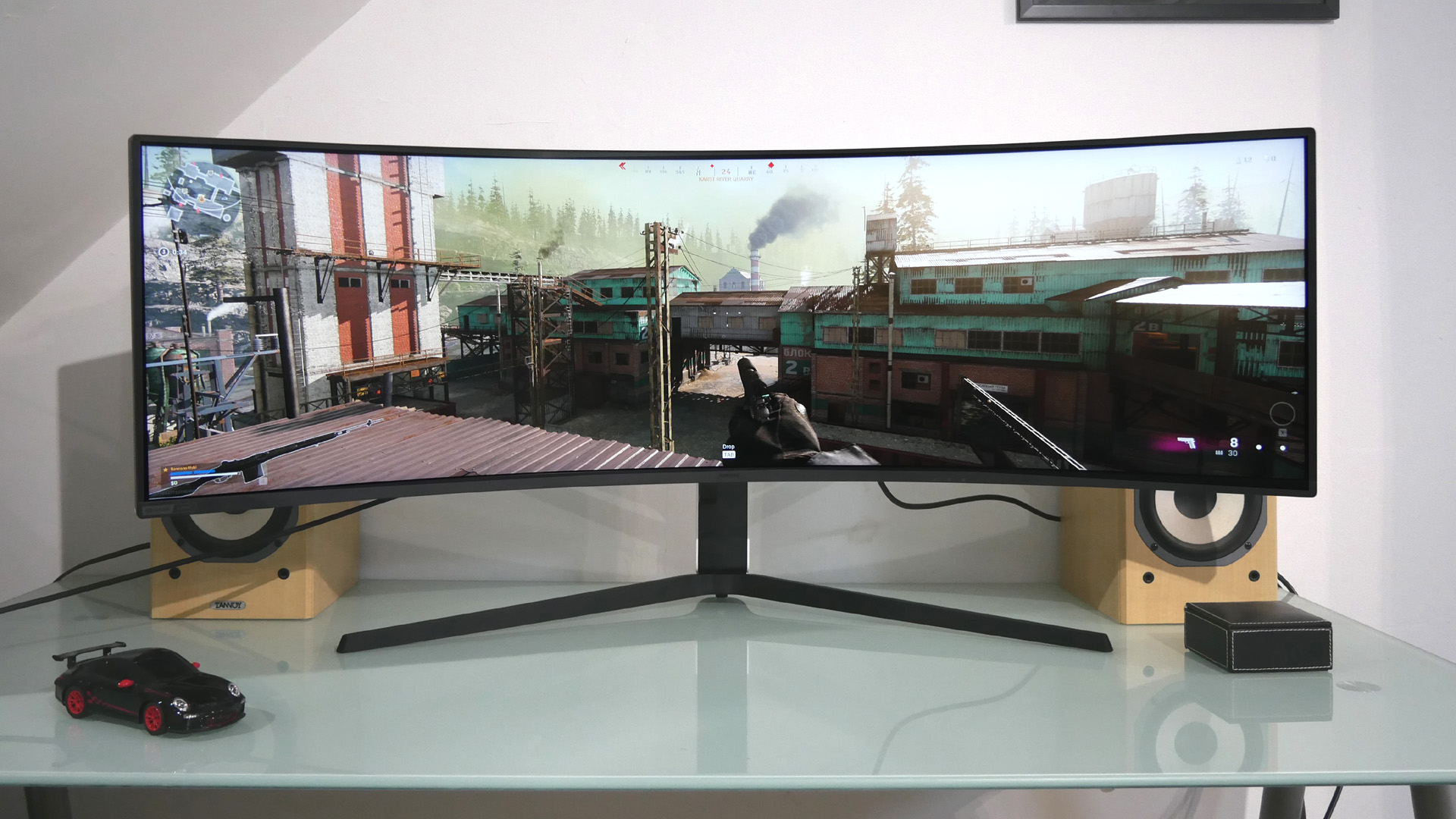Our top 5 tips for saving money on your next gaming monitor
When it comes to saving money on gaming monitors, you can forget about 4K and HDR frills - they’re not relevant to real-world affordable gaming

Without mentioning the dreaded c-word, the price of pretty much everything is up of late. And that includes the best gaming monitors. Which is why a lot of folks are now looking to the likes of the best cheap gaming monitors, and thinking about how they can get a great display for less. And we're here to help, as there are ways to keep the cost down without having to compromise on quality.
Currently, 32-inch 4K 144Hz panels like the AOC AGON PD32M are all the rage. Fine if you can afford the $1,000 / £1,000 fee. The $1,300 Alienware AW3423DW QD-OLED monitor has turned heads, too. For most mere mortals, however, that type of display and the graphics hardware needed to drive it is out of reach.
But don’t panic. A decent gaming monitor can still be had for reasonable money, especially if you make sensible compromises between factors like screen size, resolution, and refresh rate. As you’ll see, features like full 4K and HDR grab a lot of headlines, but they aren't necessarily relevant to real-world, affordable gaming. Finally, all of what follows applies to new monitors. You could consider going for used or refurbished models but if you do go this route we’d favour sourcing a refurb from a retailer with a good reputation.
Anyway, let's get to it: below are our top tips for saving money on your next gaming monitor, and if you want to cut to the chase, here are some of the latest prices on our favourite cheap gaming monitors.
Forget about 4K
If getting value for money is paramount then 4K really doesn’t make any sense. For starters, you'll need one of the best gaming PCs going, or one that at least has one of the best graphics cards in it to even have a hope of running a 4K picture at decent frame rates. Even with graphics card pricing dropping dramatically lately, you’re still looking at $1,000 / £1,000 or thereabouts for a truly 4K capable video board on top of whatever monitor you buy. That’s hardly value.
For consoles, most 4K gaming actually involves some kind of image upscaling; the harsh reality is that the current crop of consoles doesn’t truly have the power for 4K rendering. Either way, then, 4K remains a niche concern. That could change for PC gamers when new GPUs arrive later this year from AMD and Nvidia. But that’s very much a ‘could’ rather than a definitely ‘will’. As a result you'll want to remove UHD 4K resolutions from the equation and concentrate on those slightly 'smaller' ones...

Aim for 1440p
1440p, otherwise known as 2,560 by 1,440 pixels, remains the resolution of choice for current PC gaming. On a 27-inch panel, for instance, it still makes for a decent pixel density of over 100DPI and so offers plenty of visual detail, without absolutely battering your graphics card.
This resolution is also a decent choice if you’re looking to get a monitor for Xbox Series X or S. Those consoles are fully 1440p compatible and the Series X in particular is capable of cranking out all 3.7 million pixels at decent frame rates. (Just remember that the Sony PS5 still doesn’t support 1440p.)
If you have a little more cash, a 34-inch 3,440 by 1,440 ultrawide flat or curved gaming monitor is a great option for PC gaming. But will typically up the ante by at least $100 / £100 over a conventional 16:9 aspect 1440p monitor.

Don’t worry about refresh rates above 144Hz
You at the back, calm down. We’re not saying that higher-than-144Hz is a complete gimmick. However, the returns in terms of smoothness and latency do diminish the higher you ramp up the refresh.
The overarching point is that for most gamers, most of the time, you’d be better off going with, say, 144Hz and 1440p rather than 1080p and 360Hz - the benefit of 360Hz over 144Hz for most types of gaming is marginal at best. Meanwhile, pretty much all games will look a lot better at 1440p than 1080p.
There are always exceptions. If you're an esports addict, OK, the 1080p ultra-high refresh option makes sense. Likewise, there are now several 1440p monitors with 165Hz or 170H refresh for similar money to the 144Hz refresh competition. In which scenario you may as well fill your boots. But as a general rule of thumb, the meeting point of 1440p and around 144Hz refresh is where it’s at for best bang-for-buck value gaming. Like almost everything post-pandemic, prices are up. But you can still get a 27-inch 1440p 144Hz monitor for under $250 or £250. Just.
Sign up to the GamesRadar+ Newsletter
Weekly digests, tales from the communities you love, and more
Don’t be tempted by TN and worry ye not about HDR
IPS technology has now become so affordable, that we don’t think it makes sense to compromise on a TN panel. Admittedly, TN technology has improved. But it still offers far worse viewing angles, contrast, and colors than the IPS and VA alternatives.
Likewise, IPS has improved significantly when it comes to response times, and now pretty much matches TN for pure speed. VA panels do tend to be a bit slower, which is worth looking out for. We wouldn’t accept a claimed response time higher than 4ms and would prefer to see 2ms or better. That’s for grey-to-grey response rather than the more forgiving MPRT metric.
As for HDR, it’s a bit of a con in terms of how it’s implemented on most PC monitors. True HDR performance costs absolute megabucks. It probably won’t be until OLED monitors achieve mainstream pricing that HDR will be relevant to value gaming.

Size isn’t everything
How big you want to go is a subjective call. But remember, bigger isn’t always better in every way. There are some really good-looking deals on 32-inch 1080p 144Hz monitors, for instance. But at that size, 1080p makes for very low pixel density. That means less detail and sharpness compared to a 25-inch or 27-inch 1080p panel.
Of course, that might be just fine. If you’re buying for console gaming and plan on sitting further back from the display, 32-inch and 1080p can make a lot of sense. But for PC gaming, we’d lean towards a slightly smaller panel and the crisper visuals that enables. And all other things being equal, smaller tends to be cheaper, enabling you to grab a decent 144Hz 25-inch monitor for under $200 / £200. So it’s a win all around.
Looking for a different kind of gaming display? Check out our guides to the best gaming TV, best TV for PS5, and best 120Hz 4K TV.
A serious dissertation on the finer points of input lag and overshoot followed by a forensic examination of AI-accelerated temporal upscaling. Such is a routine day in the working life of long-time tech wordsmith, Jeremy Laird. Along with GamesRadar, Jeremy’s 15-year back catalogue includes a host of tech and gaming outlets, including TechRadar and PC Gamer, not to mention contributions to mainstream media from the Independent to the Evening Standard. Complimenting Jeremy’s debilitating addiction to all kinds of digital hardware, he is also afflicted by an obsession with and a significant occupational sideline in cars and automotive technology.



